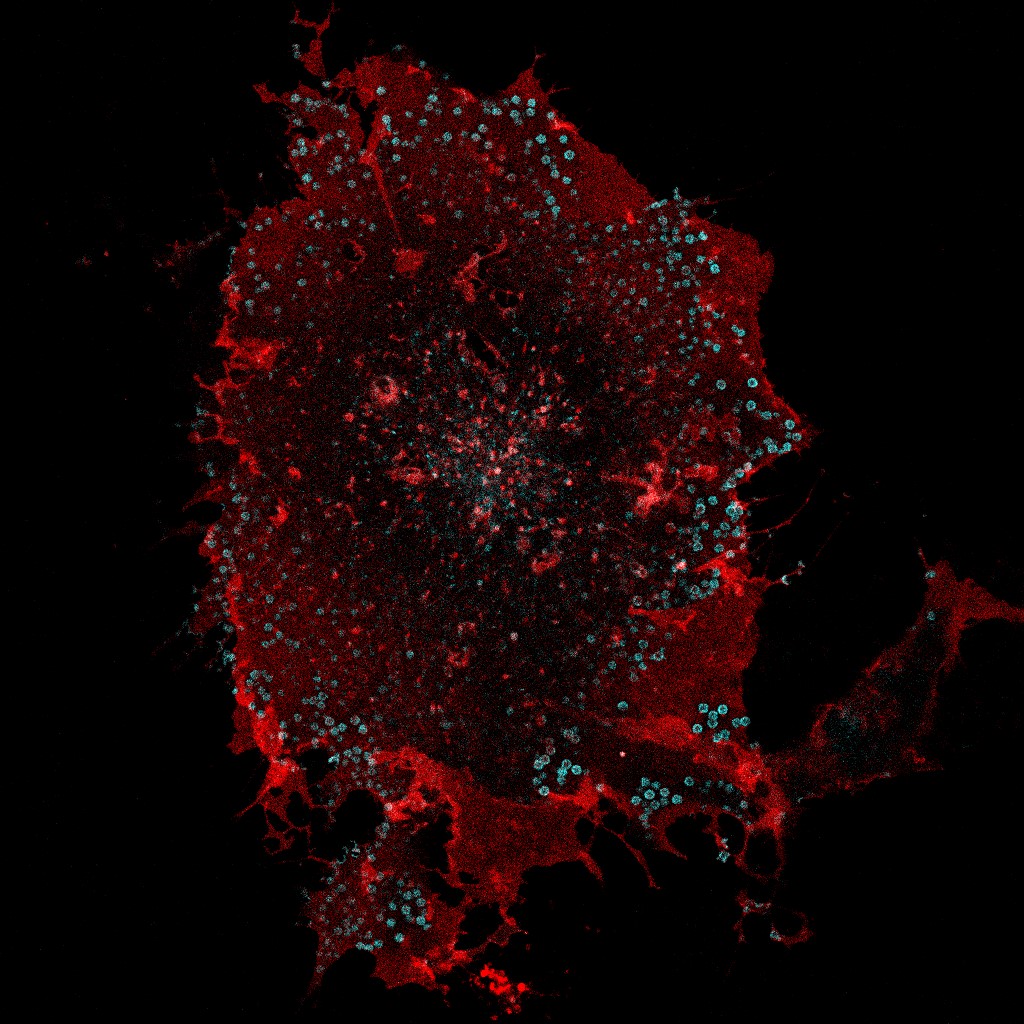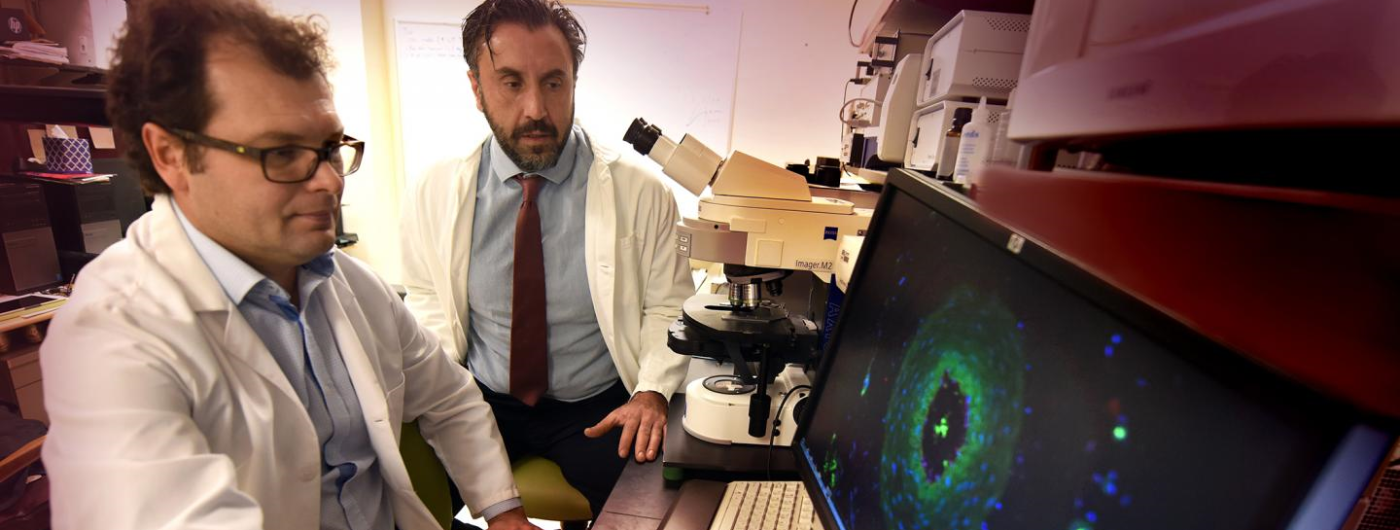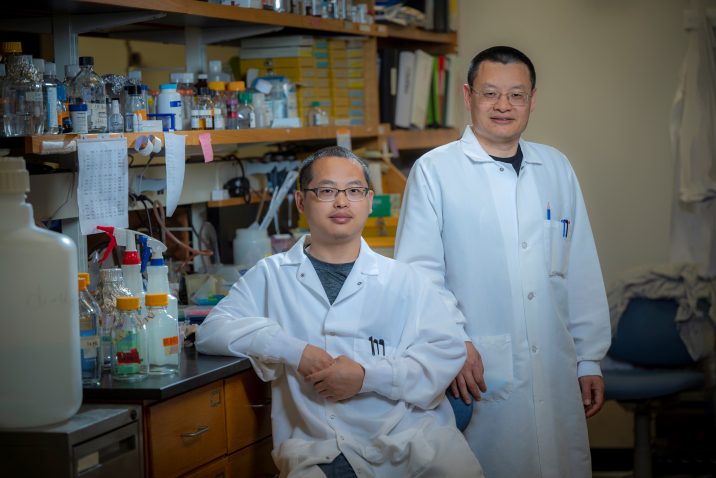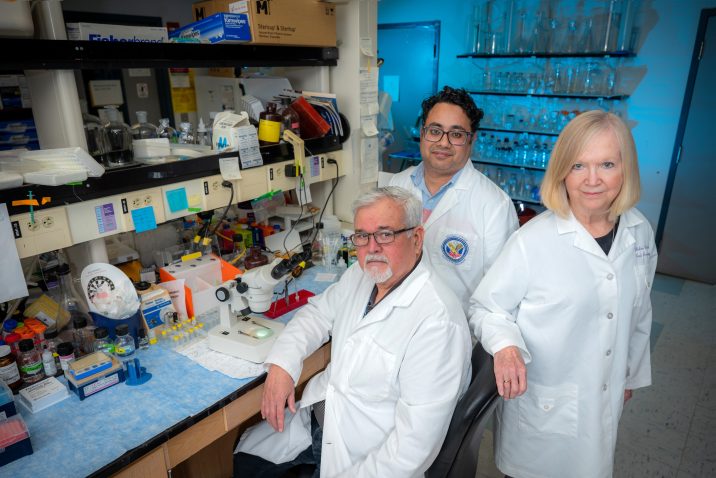|
Originally developed to discover how remedies and poisons effected man, modern pharmacology
lays the groundwork to discover and develop future generations of therapeutics. Pharmacology's
scope has broadened to include: computer-assisted drug design; genetic screens; protein
engineering; and new drug-delivery vehicles like viruses and artificial cells.
The department's history of accomplishments include the discovery of the adrenergic
receptor subtypes-alpha and beta which led to developing several drugs used to treat
cardiovascular disease. Cardiovascular and neuroscience studies are the focuses of
the department's research programs.
Raymond P. Ahlquist, working in this Department, first defined α and β adrenergic receptors
in 1948. This discovery eventually led to the development of “β blocker” drugs for
hypertension and heart disease.
|
|

β adrenergic receptors (blue) clustered into artificial microdomains on the surface
of a living COS7 cell (red).
|







